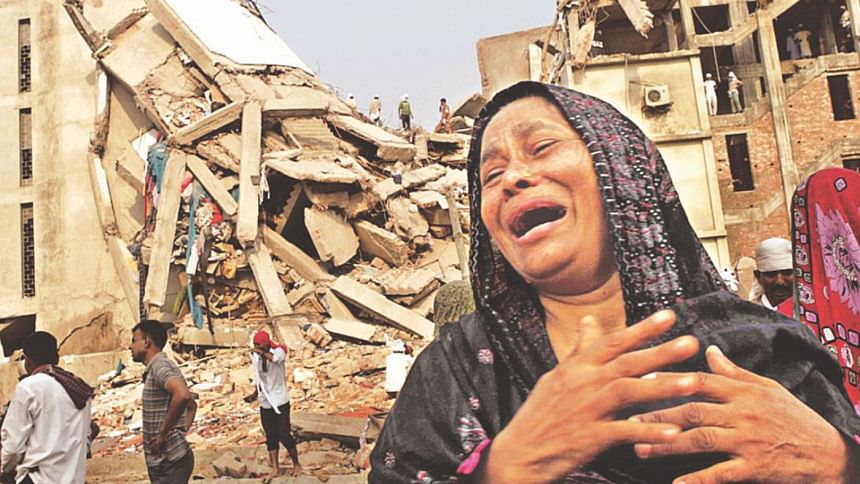Legal framework for workplace safety

Workplace health and safety conditions in Bangladesh has seen steady improvements since the disastrous Rana Plaza incident which claimed 1,136 lives six years ago. According the 2018 report of Bangladesh Occupational Safety, Health, and Environment Foundation (OSHE), the number of work-related deaths and injuries were 898 and 341 respectively. While this is still a substantial number, it is definitely lower than that of the preceding two years. Experts have consistently pointed to the lack of implementation of labour laws as the reason behind the persisting cases of work-related deaths and injuries.
The Bangladesh Labour Act (BLA) was promulgated in 2006, consolidating over 25 pre-existing laws on various labour-related issues. BLA contains multiple chapters dedicated to the issue of occupational safety, health and hygiene.
Chapter V of the Act has laid out the hygiene measures to be undertaken in establishments with painstaking details, ranging from the manner in which the interiors must be cleaned to the water that should be used in case of artificial humidification. Many health concerns including inhalation of harmful particles, ventilation, temperature, adequate toilet facilities and proper lighting are addressed within this Chapter. On the other hand, Chapter VI of the Act addresses safety concerns such as fire, machineries and other hazardous work conditions.
Section 61 gives the Inspector discretion to determine whether the fire safety and precautions of an establishment is satisfactory and act accordingly, through a written order to the employer to either take necessary measures or to halt the use of such establishment. As per the Labour Rules 2015, inspection must be made before the granting or renewal of license.
BLA places a great amount of reliance on the Inspector’s judgment in determining most of the safety concerns in the workplace. For such reliance to be effective, significant professional and technical expertise of inspectors must be ensured and sufficient number of such persons must be employed. Furthermore, the rules should be clearer on when and how inspections are to be conducted, since all the necessary responsibilities cannot be ensured by simply inspecting an establishment at the time of granting or renewing a license.
However, one impressive aspect of the Act is that it allows workers to communicate their safety concerns to the employer under Section 86. The employer shall be liable to compensation if they fail to address such concerns and a worker is injured as a result. Unfortunately, this creates a punitive rather than a preventive approach and thus, curbs its effectiveness.
Furthermore, it could be construed that BLA 2006 addresses the concerns regarding sexual harassment in Section 332. But the wording of the Section istoo vague and the provision does not mention any consequence for its violation. Another inadequacy of the Act is its provisions regarding compensation for work-related death or injury. According to the Act, the maximum amount that can be paid in cases of death and permanent disability are 1 lac and 1.25 lac respectively. Alternative remedies exist in the Fatal Accidents Act 1855, but the process under the BLA is speedier and therefore, preferable
Therefore, it is apparent from a reading of the Labour Act 2006 that while many of its safety provisions are very ambitious, there are many clear deficiencies. Lack of implementation, dearth of skilled inspectors and delays in Labour Courts altogether mean that occupational health and safety remains as one of the significant concerns for the workforce in Bangladesh. The Government must address them in order to sustain the economic growth it prides itself on.
The writer works with Law Desk, The Daily Star.

 For all latest news, follow The Daily Star's Google News channel.
For all latest news, follow The Daily Star's Google News channel. 



Comments